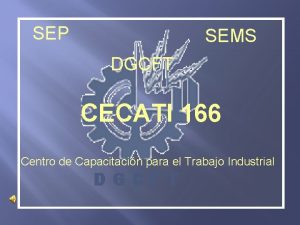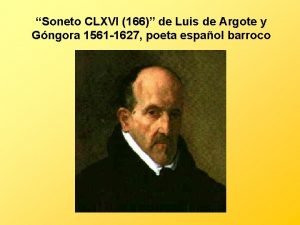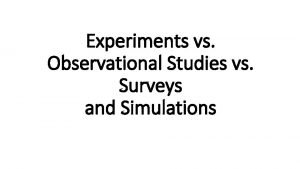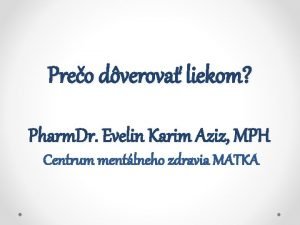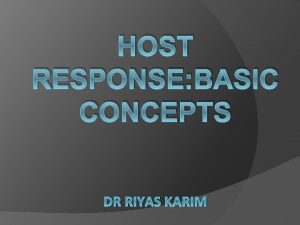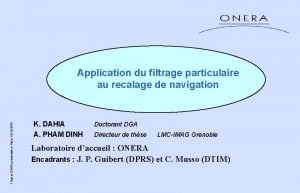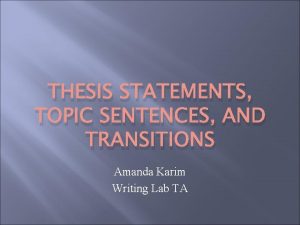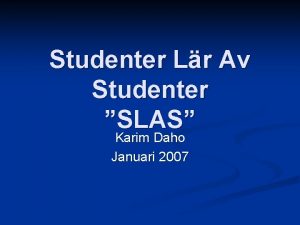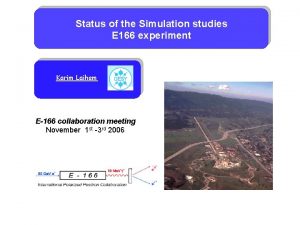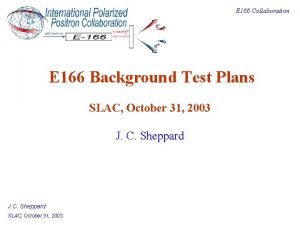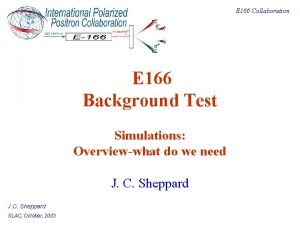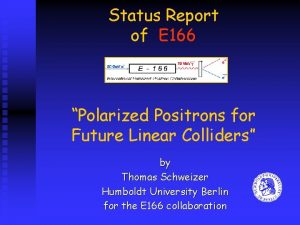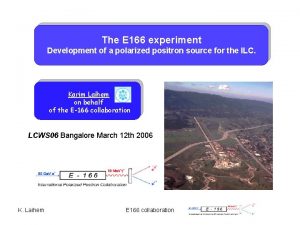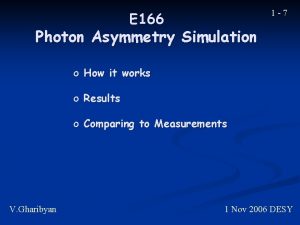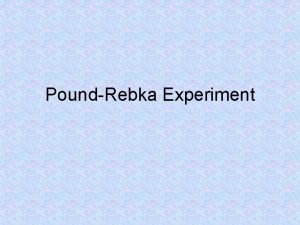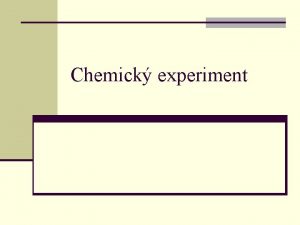Status Report Simulation studies E 166 experiment Karim














![y r a n i m i l re P Positron Polarization [%] Iron y r a n i m i l re P Positron Polarization [%] Iron](https://slidetodoc.com/presentation_image/244635697a06625c0b8506e5c5cb7bb9/image-15.jpg)

- Slides: 16

Status Report Simulation studies E 166 experiment Karim Laihem Princeton meeting 22 -05 -2006 K. Laihem Princeton meeting

Convert the asymmetry to polarization • What we have achieved in E 166 ? (e+ and photon asymmetry) Convert the X axis from current to Me. V K. Laihem Princeton meeting

Updated geometry E 166_Geant 4_Simulation K. Laihem Princeton meeting

18” Exit region Entrance region K. Laihem Princeton meeting

7. 9” 3. 6” 7. 78” Conversion target K. Laihem solenoid Entrance region 9. 4” Exit region Spectrometer Princeton meeting Reconversion target

Solenoid magnetic field. (SLAC’s measurements) Where the coordinate z is given in centimeter. (1) (2) (3) K. Laihem Princeton meeting Solenoid Axial field. The fit function is a Gaussian profile

MERMAID field map implementation into E 166_G 4_SIM Z e+/e- Track Y X Figure 19. Scheme of one unitary segment for the 3 D interpolation. Z (i, j, k+1) (i, j+1, k+1) (i+1, j+1, k+1) (i, j, k) (i, j+1, k) Y (i+1, j, k) X (i+1, j+1, k) Figure 20. Scheme of the 3 D segmentation using the unitary cube method for the field map implementation K. Laihem Princeton meeting

Solenoid focusing effect. IL = 0 A IL = 150 A IL = 350 A e+ 2 D Spatial distribution at the Entrance of the spectrometer. For different IL value (IL = 0, 150, 350 A) (Spectrometer OFF). Focusing effect of the lens is shown K. Laihem Princeton meeting

e+ spatial distribution showing the density (A), at the entrance of spectrometer (B) at the exit of spectrometer (C) and at the reconversion target for different setting points IS and IL. IS= 120 IL = 200 IS= 160 IL = 250 K. Laihem Princeton meeting

E 166_G 4_SIM ? To be clarified Ee+(180)=7. 4 Me. V This point can not be seen by the simulation If we use the First harmonic (Ecutoff = 8. 3 Me. V) Figure 33. Positron energy versus spectrometer current. K. Laihem Princeton meeting

(E 166 Zeuthen group) K. Laihem Princeton meeting

E 166_G 4_SIM 9 Xtals K. Laihem Princeton meeting

im l e y r a n i r P 7% N = 10 4 E e+ = 3. 7 Me. V P e+ = 70% -7% N = 10 4 E e+ = 3. 7 Me. V P e+ = 70% K. Laihem 300 bunches CPU time ~24 h Princeton meeting Asymmetry % = 0. 43 ± 1. 3

im l e y r a n i r P 100% N = 10 4 E e+ = 7 Me. V P e+ = 100% -100% N = 10 4 E e+ = 7 Me. V P e+ = 100% K. Laihem 150 bunches CPU time ~17 h Princeton meeting Asymmetry % = 13 ± 1. 4
![y r a n i m i l re P Positron Polarization Iron y r a n i m i l re P Positron Polarization [%] Iron](https://slidetodoc.com/presentation_image/244635697a06625c0b8506e5c5cb7bb9/image-15.jpg)
y r a n i m i l re P Positron Polarization [%] Iron Polarization [%] Asymmetry [%] Analyzing power [%] 3. 7 70 7 0. 43 ± 1. 3 8. 77 7 99 99 13 ± 1. 4 13 [Me. V] Polarization [%] Iron Polarization [%] 7 99 99 Positron Energy [Me. V] Electron Energy K. Laihem Preliminary Test Without Annihilation (polarization=0) Asymmetry [%] 15 ± 1. 0 Princeton meeting Analyzing power [%] 15

Summary • Code optimization • Computer power to see these small asymmetries with reasonable errors. • -…………………… K. Laihem Princeton meeting

